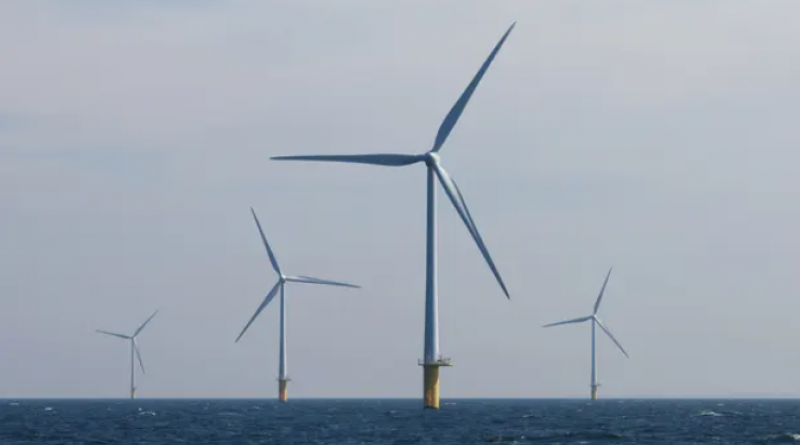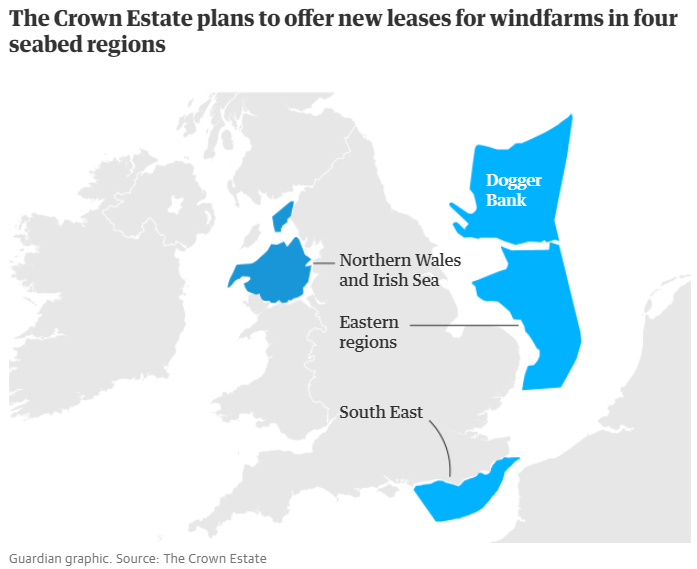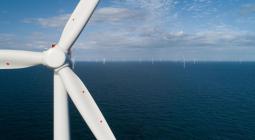How the Queen came to own the seabed around Britain.

An auction of offshore plots for future windfarms is being held by the Crown Estate.
The Queen’s ownership of the British coastline is as old as the monarchy itself. But her right to collect royalties from wind and wave power is much more recent: it was granted by Tony Blair’s Labour government in a 2004 act of parliament.
The Crown Estate, which manages the royal property portfolio, is holding the first auction of seabed plots for windfarm turbines in a decade. It emerged this week that bidding has reached record highs as energy firms look to diversify away from oil.
The story of how Queen Elizabeth was given the rights to exploit this renewable energy source has its roots in the North Sea oil boom of the last century.
Her marine domain extends over the continental shelf, a zone up to 200 metres deep around the British Isles. To the east, the limit lies halfway across the North Sea to the Netherlands and Belgium, to the west, halfway across the Irish sea.

Until the 1960s there was no legislation declaring crown ownership below the low-water mark. Sovereignty was by convention.
A decade after her coronation, the question of how far the domain should extend was being raised by the monarch herself. Following an audience with Queen Elizabeth in 1962, the Earl of Perth, the first commissioner of the Crown Estate, reported that “she had seen something about the Crown Estate taking over rights on land under the sea”.
The discovery of North Sea oil and gas was a catalyst, with drilling companies demanding clarity of ownership. In 1964, the Continental Shelf Act set the much wider boundary that remains in place today.
The ownership of oil and gas on land and at sea rests with the crown, but since 1934 the job of exploiting it, by setting royalties and assigning drilling rights, has rested with the government.
Wind power is different. From the first round in 2000, leasing was managed by the Crown Estate.
In 2002, government lawyers suggested using a UN convention to create an “exclusive economic zone” for wind and wave power within the continental shelf boundary. A green paper asked for views on “the most appropriate body” in which to vest management of this new zone. By 2004, when the Energy Act was passed during Blair’s premiership, the decision had been made. Exploitation rights would remain with the crown.
5 February 2021
The Guardian




